Table of Contents
In this article, we’re discussing laptops and devices built on the AMD Strix Halo laptop hardware launched in early 2025, or the so-called AMD Ryzen AI Max platform.
Ryzen AI Max hardware is unique among the mobile platforms available today, as it pairs a powerful processor built on AMD’s latest-to-date Zen5 cores with a massive integrated graphics chip, with as many as 40 AMD RDNA3.5 Compute Units. There’s no other such chip available out there with this sort of iGPU, while on the CPU side, only the highest-tier Ryzen HX and Core HX/Core Ultra HX SKUs offer similar levels of performance.
Nonetheless, the Ryzen AI Max hardware is meant as a standalone platform, with the AMD chip handling both processor and graphics processing. That’s unlike AMD’s Strix Point and Fire Range hardware, which is mostly paired with dedicated graphics from Nvidia, including RTX 5000 Blackwell chips for devices launched in 2025.
Down below, in the first part of the article, we’ll go through the particularities of this AMD Strix Halo hardware, and our estimations on performance in actual tasks and games, which we’ll then update with actual performance benchmarks and findings once we get to properly test the devices built on this hardware.
In the second part of the article we’ll list all laptops and devices built on this AI Max Ryzen hardware, and specifically point out those that primarily stand out as the best Ryzen AI Max implementations with their format, features, or potential capabilities.
AMD Strix Halo Ryzen AI Max APU lineup
These are the Ryzen AI Max APUs that will be implemented in devices this year, with Pro and non-Pro variants for most SKUs. The Pros are meant for business/enterprise notebooks, while the others are for regular implementations. I’ve also included the Strix Point Ryzen 9 AI 370 in the table, to showcase the differences between the two platforms.
| Ryzen AI Max+ 395 | Ryzen AI Max 390 | Ryzen AI Max 385 | Ryzen 9 AI Max 380 | Ryzen 9 AI 370 HX | ||
| Build process | 4nm | |||||
| Generation | Zen 5 | Zen 5 | ||||
| TDP | 45-120W | 15+ W | ||||
| Cores/Threads | 16x Zen5, 32 Threads |
12x Zen5, 24 Threads |
8x Zen5, 16 Threads |
6x Zen5, 12 Threads |
4x Zen5, 8x Zen5c, 24 Threads |
|
| CPU Max Boost | up to 5.1 GHz | up to 5.0 GHz | up to 5.0 GHz – Zen5 | up to 4.9 GHz – Zen5 | up to 5.1 GHz – Zen5, up to 3.3 GHz – Zen5c |
|
| L2+L3 Cache | 80 MB | 76 MB | 40 MB | 22 MB | 36 MB | |
| Memory Type | LPDDR5x-8000, max 128 GB | DDR5-5600, LPDDR5x-8000 |
||||
| Graphics | Radeon 8060S, 40 CUs, RDNA3.5 |
Radeon 8050S, 32 CUs, RDNA3.5 |
Radeon 8050S, 32 CUs, RDNA3.5 |
Radeon 8040S, 16 CUs, RDNA3.5 |
Radeon 890M, 16 CUs, RDNA 3.5 |
|
| Graphics Speed | up to 2800 MHz | up to 2800 MHz | up to 2800 MHz | up to 2800 MHz | up to 2900 MHz | |
| AI Engine | NPU – up to 50 TOPS, Total – up to 126 TOPS (Ryzen AI Max+ 395) |
NPU – up to 50 TOPS Total – up to 80 TOPS |
||||
As mentioned earlier, all you should mostly need to know is that AMD Strix hardware is all about pairing a powerful processor with an integrated graphics chip unlike anything offered before, for a unified solution. Of course, the performance differs significantly between the flagship Ryzen AI Max+ 395 and the bottom-tier Ryzen AI Max Pro 380, with a solid middle grounder in the Ryzen AI Max 385 that I’m specifically looking at seeing in action.
As far as that Ryzen AI Max+ 395 goes, expect graphics performance somewhere between a mid-powered RTX 4060 and 4070. This AMD hardware works best at around 70-80W, so the GPU performance is compared to a 4060/4070 at the wattage as well. Nonetheless, that’s impressive for an iGPU and 2.5-3x what something like a Radeon 890M can offer, or at least 2x what’s offered on Intel’s side by the Arrow Lake Core Ultra 200H chips with the faster Arc 140T iGPU.
But you should be aware that this Ryzen AI hardware can run at between 45-120W cTDP, and that means its actual capabilities are going to vary significantly between implementations. A more portable laptop chassis won’t offer the same potential as a beefier implementation.
A detailed look into the Ryzen AIs Max+ 395 platform at 35W to 80W of power between power modes is available in our detailed review of the ROG Flow Z13, over here.
Nonetheless, I am interested in how well this platform is going to scale down at lower power levels. Strix Point does very well, especially on the iGPU side, where the Radeon 890M at 20W still scores roughly 75-80% of its full potential at 45+W. But with these Ryzen AI Max SKUs and Radeon 8000 graphics, the differences are going to be most likely bigger.
Memory is an interesting aspect of this platform as well, with support for up to 128GB of very fast LPPDDR5x, out of which 96 GB can be allocated to the GPU. Most configurations will get 32 GB of RAM, though, with up to 24 GB that can be put towards the iGPU. That’s still plenty and allows potential Strix Halo laptops to be versatile performers in applications that benefit from vRAM, including AI applications where you will be able to load bigger and more advanced models on something like this than on regular devices of this size.
Compared to AMD’s Strix Point hardware, which is implemented in quite a few thin-and-light designs either standalone or paired with Nvidia dGPUs, the Strix Halo APUs have a potential advantage in CPU processing power and a potential disadvantage in efficiency, since the platform doesn’t include any Zen5c cores, which should affect battery runtimes in comparison. GPU performance, on the other hand, is the real question here, especially in portable implementations that can’t physically get Nvidia graphics. That’s if they’ll exist at all since the Ryzen AI Max APU is physically much larger than the regular chips normally implemented in mobile devices, which raises the question of motherboard design and cooling on a potential portable Strix Halo computers.
For a deeper look at the AMD platforms available for 2025 devices, I suggest going over this dedicated article on AMD Strix Point, Strix Halo, Krackan or Fire Range.
At the end of the day, objectively looking past the hype of having a unified AMD platform with these specs, the success of Strix Halo is up to the actual products that will implement the hardware. Format and pricing are going to play a major role in steering potential buyers towards this platform over the multitude of others available out there, especially later in the year once the mid-tier RTX 5000 dGPUs get out.
So far, there are very few actual products announced on this hardware, so we’ll see what we’ll actually get later in the year. And those few announced are expensive.
Complete list of AMD Strix Halo laptops (up to Ryzen AI Max+ 395)
This section lists all available/launched devices built on this Ryzen AI Max 300 hardware, although very few have been announced so far; but stay around for updates as new ones are released.
So far, the ROG Flow Z13 gaming tablet from Asus stole all thunders, as the only real product showcasing the platform at CES as an early working prototype that ran some games such as Black Myth: Wukong. The final products are coming later in the year, so stay around, we’ll have our reviews and coverage ready once allowed by embargos. What you should keep in mind is that the 2025 ROG Flow Z13 is a mid-range implementation of this hardware, with upwards of 80W sustained TDP, and that’s despite its compact size, due to the tablet format and highly advanced cooling. It’s going to cost north of 2k USD and 2.5K EUR in the Max 395+ version.
HP also quietly launched a Strix Halo ZBook Ultra 14 mobile workstation, with a premium and fairly compact 14-inch notebook format, a potential excellent allrounder in a top-tier traditional chassis. However, I’d only expect a mid-powered implementation of the AMD hardware in this chassis, and with some truly hefty prices of many thousands of dollars for the higher-tier configurations, given past experience with existing ZBooks.
Update: I’ve also included some of the few mini-PC formats announced or available with Strix Halo hardware.
We’re updating the list as it goes.
| Model | Screen | Hardware | Graphics | Weight | |
| Asus ROG Flow Z13 GZ302 | 13.3-inch 16:10 IPS touch | up to Ryzen AI Max 395+, max 128 GB LPDDR5x RAM |
up to Radeon 8060S, 40CUs | 2.65 lbs / 1.2 kg – tablet only | |
| our detailed review – premium compact tablet format, all-metal chassis, keyboard folio with keyboard/touchpad; 16:10 IPS touch display with 2.5K 180Hz 3ms panel, with touch and pen support; several configurations, Ryzen AI Max 390 or AI Max+ 395, up to 128 GB RAM LPDDR5x-8000 onboard, single M.2 2230 SSD storage; most retail configurations with 32 GB RAM, 64/128 GB versions only offered in some markets; dual-fan cooling design with vapor chamber, liquid metal; 70 Wh battery, 200W charger, dual speakers, dual cameras |
|||||
| Price: $2199 for the Ryzen AI Max+ 395 configuration with 32 GB RAM | |||||
| Framework Desktop | no | up to Ryzen AI MAX 395+, max 128 GB LPDDR5x RAM |
up to Radeon 8060S, 40CUs | 6.85 lbs / 3.1 kg | |
| compact desktop, mini-ITX format, barebone design, 150 x 82 x 40 mm, 4.5 l; various versions, from Ryzen AI Max 385 with 32 GB RAM to Ryzen AI Max 395 with 128 GB RAM; 120W sustained power with 140W boost; 2x SSD slots, storage and fan not included by default; 5Gb wired Internet, WiFi 7; multiple ports front and back; cooling module with 6x heatpipes, large heatsink, single 120 mm fan; 400W power source, internal |
|||||
| Price: from $1099 for Ryzen AI 385 with 32 GB RAM | |||||
| GMKtek EVO-X2 | no | up to Ryzen AI MAX 395+, max ?? LPDDR5x RAM |
up to Radeon 8060S, 40CUs | 1.3 lbs / .6 kg | |
| ultra compact micro desktop; likely same format as the Evo X1 with Ryzen Ai hardware; 0.5 x 4.4 x 4.2 inches in volume, 1.3 lbs/0.6 kg weight, with external power supply; up to 140W TDP, 2x SSD slots, 2x fans; wired Internet, WiFi; multiple ports front and back. |
|||||
| Price: ?? | |||||
| HP Z2 Mini | no | up to Ryzen AI MAX 395+, max 128GB LPDDR5x RAM |
up to Radeon 8060S, 40CUs | 5 lbs / 2.3 kg | |
| compact micro desktop; 3.4 x 6.6 x 7.9 inches in volume; 5 lbs/2.3 kg weight, with internal power supply; 2x SSD slots, ?? fans; 2.5G wired Internet, WiFi 7; multiple ports on the side and back; 300W power source, internal |
|||||
| Price: ?? | |||||
| HP ZBook Ultra 14 G1a | 14-inch 16:10 IPS matte or OLED touch | up to Ryzen AI MAX 395+, max 128 GB LPDDR5x RAM |
up to Radeon 8060S, 40CUs | 3.3 lbs / 1.5 kg | |
| premium 14-inch mobile workstation chassis, compact design; 16:10 14-inch display with either 2K IPS matte or 2.8K OLED touch panels; white backlit keyboard; glass touchpad; good IO; multiple configurations, up to Ryzen AI Max+ 395 with 128 GB LPDDR5x-8533 memory, 1x M.2 2280 SSD; no exact details on the cooling so far, but expect dual-fan dual-heatsink with a bunch of heatpipes; 4x up-firing speakers, 2x mics, 5MPx IR camera; 74.5 Wh battery, 100/140W USC-C charger |
|||||
| Price: tba in 2025 | |||||
That’s about it for this article.
I’ll update it as new AMD Strix Halo designs are announced, once we are allowed by embargoes to publish our findings on the ROG Flow Z13 (with the AMD Ryzen AI Max+ 395 specs), but hopefully, as we get to test other implementations as well.
In the meantime, I’d love to hear your thoughts on the hardware, your expectations, and what Strix Halo could mean for the laptop space this year.

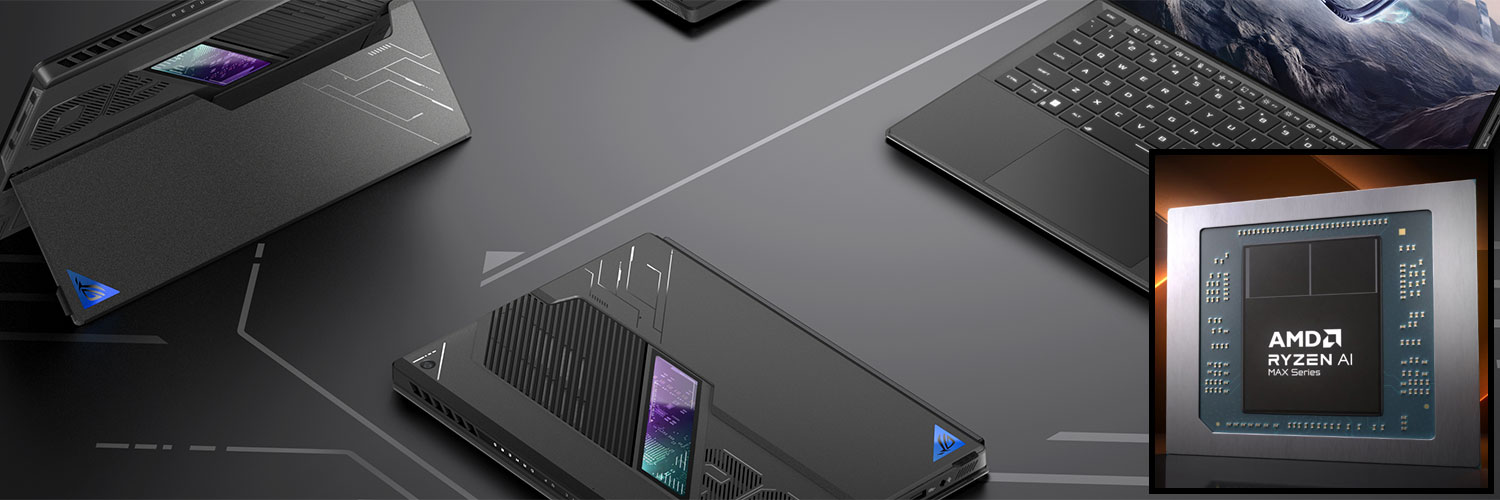
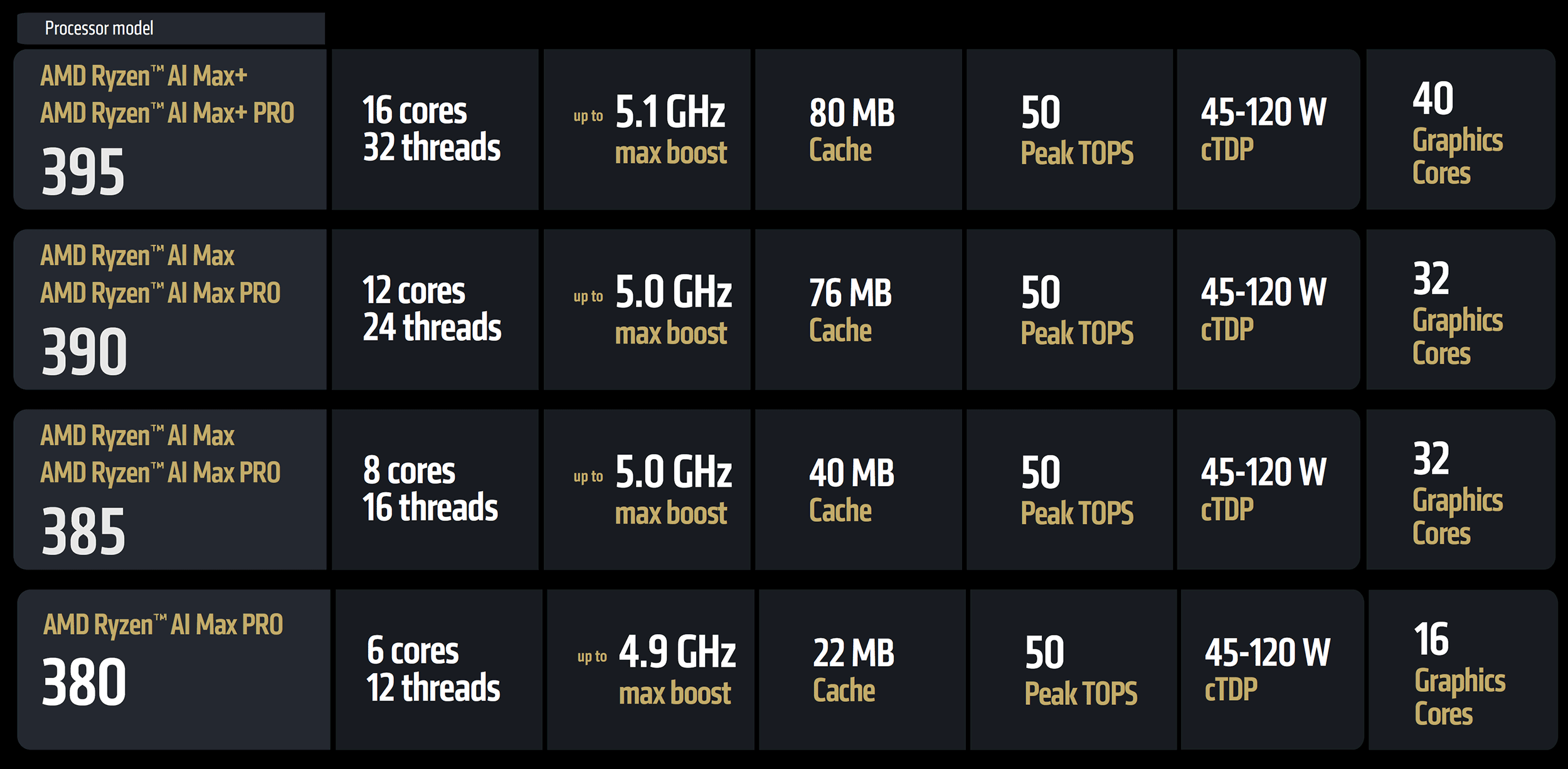

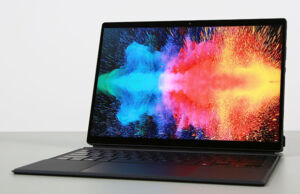
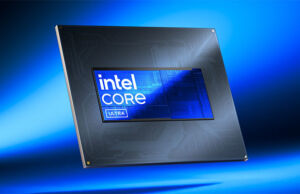
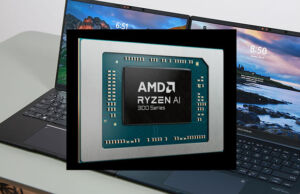
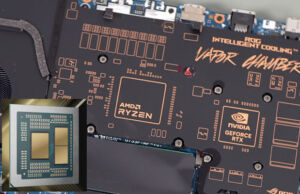
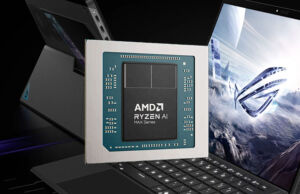

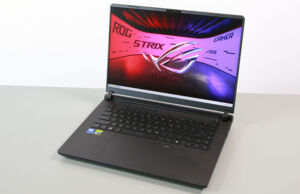

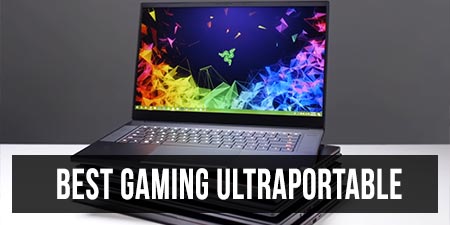

gc
January 11, 2025 at 1:53 pm
Will the LPDDR5X be soldered or will it be LPCAMM? Hopefully the latter for inventory flexibility and year-later upgrades.
Piotr
January 13, 2025 at 11:10 am
It's soldered.
gc
January 11, 2025 at 1:59 pm
Ah, next article describing Flow Z13 says it will use soldered LPDDR5x.
Piotr
January 11, 2025 at 9:58 pm
The main Asus site lists a 128GB RAM SKU for Flow Z13 while the local Polish one lists 3 SKUs and all 32GB RAM. 32GB seems fine, but also this SoC screams lots of RAM for some fun prosumer features.
Zbooks also tend to have higher prices than what they put in them so both the tablet and the laptop could be "very halo" priced. I'm thinking about Z13, and putting Linux on it. It's a bit shame it's 2230 SSD.
Andrei Girbea
January 13, 2025 at 10:51 am
I've asked about potential retail versions with more than 32 GB, don't have an update yet. I for one doubt we'll see configs with 128 GB of RAM, and even 64 GB will be a stretch
Piotr
January 13, 2025 at 11:10 am
Hardware Canucks got info from Asus that 64 and 128GB variants will come later.
GATTACA
January 16, 2025 at 8:06 am
Will it be released on the desktop market? I want to build one.
Andrei Girbea
January 20, 2025 at 11:51 am
these are mobile chips. Not sure about a desktop alternative, not my area of expertise
Somedude
March 4, 2025 at 6:09 pm
Framework is selling an iTX board with this APU, configurable up to 128gb ram.
Andrei Girbea
March 4, 2025 at 6:58 pm
Thanks. Updated
performanceONLY
January 19, 2025 at 6:31 pm
please, one manufacturer at least, make plastic even bulky laptop with this max plus 395 chip on it with 100-120W tdp but pricing starts below 1000$ . we need performance more than looks & expensive design choice for budget laptops & if it's more expensive, laptops with better cpu gpu combo performance from last year is on sales with those higher price tag which makes this new laptop with max395 plus , just anther option to choose at most or simply not worth it. Lenovo or hp clevo for sure can do that
Form Factor with better cooling?
January 25, 2025 at 2:40 pm
@Andrei,
Hi. Based on your experience dealing with many different laptops and devices in different form factors, which do you think would end up having better cooling and thermal headroom (& acoustic noise under load profile too) between the 2 mobile Strix Halo machines, Rog flow z13 and zbook ultra g1a?
I know neither is out yet so hard to say without any definitive conclusive evidence but just on your past experience dealing with such devices, if you had to guesstimate?
I used think that laptops would always have / be better at cooling. But then after briefly trying a rog ally came away impressed. The fact that it's capable of dissipating 28w+ while not being too noisy. And was dead silent / barely audible at 18w. In comparison, my old surface laptop I used to use would like a hair dryer above 15w and had only quieter fans at 13w.
I suppose it's not just form factor that effects cooling performance but also the thermal compound used. The stuff used in Rog ally seems to be somewhat similar to liquid metal where's my surface most likely used cheaper lower grade stuff.
But it has got me thinking, perhaps maybe tablets are more effective at airflow? Since their fans aren't completely blocked out when in upright position whereas most people use a laptop on a surface which ends up blocking the ventilations grid holes..
Andrei Girbea
January 25, 2025 at 7:37 pm
The form factor and the internal cooling module both play an important role on cooling these devices. We already know what to expect form the Flow based on the previous model, it will run at much higher power on the top profile than something like a traditional laptop (lile that ZBook, but also others that are similarly light and compact), and it will also provide good Balanced and Silent profiles.
This Flow is also nothing like the Surface, it's thicker, heavier and has a completely different cooling module, incomparable to the measly cooling on the Surface.
will blake
February 19, 2025 at 8:01 pm
Paperlaunched niche product instead of mainstream premium 16-18 inch desktop replacement killer. Oh well.
NikoB
February 21, 2025 at 6:57 pm
Well, the first tests of AI 9 395 are available, albeit in the 13" model.
What do we actually have in comparison with Ultra 9 285H and Apple M4 Pro?
M4 Pro is significantly faster in the single-threaded test. 285H is faster by about 15-16% at the same PL1 (SPL for AMD) and only by 9% at 70W vs 45W.
In the multi-threaded test, AI 9 395+ wins over 285H by more than 34% (CBR15 ~4700 points sustained at 70W SPL vs ArrowLake 9 285H – 2240 points (PL1 45W)) at the same PL1 (SPL for AMD). This is shameful for Intel, given that 285H is made on TSMC's "3nm", and Zen5 Strix/Halo on "4nm" TSMC.
Moving on – the RAM bandwidth in Zen5 Halo with a 256-bit controller was disappointing. Tests from the AIDA64 package. Especially the read speed – it's just shameful – 122GB/s. The write speed is good – 216GB/s. The copy speed is average – 158GB/s. The average r/w/c bandwidth is about 165-166GB/s at SPL=70W. Which apparently gives an increase of +50-60% to ArrowLake 285H with an outdated 128-bit memory controller, but of course not in read mode. The low read speed of 122GB/s in Zen5 Halo hints at more problems in the chiplet bundle, as was previously the case in old Zen, when the write speed was 2 times worse than the read speed. Now everything is the other way around. In fact, the read speed corresponds to the 128-bit mode for LPDDR5x 8000, not 256-bit, and I don't think that other laptop models will fix anything in this regard (and with a lower SPL, everything will be even worse)…
I also draw your attention to the fact that, unlike Zen4 Phoenix and older ones, for some unknown reason, the Zen5 Halo does not have a hardware AV1 decoder in the specifications (possibly an error by AMD tech writers), and in Zen4 Phoenix 8k is decoded and played only up to 49 fps, i.e. 50-60 fps video with hardware decoding is not available. However, even in ArrowLake, Intel has a maximum fps for playing 8k – 30 fps. That is, no changes for the better either.
Let's move on to the 8060S, which AMD declared as close to the 4070 at a TGP of about 75W (which is 2 times lower than normal "gaming" solutions). My overall performance rating of the 8060S is about the level of the mobile 4050 and sometimes closer to the 4060 in rare cases. In native mode without crutches like FSR / DLSS. And old games, where this igpu is most interesting, just do not support frame interpolators …
Well, in general, a rather interesting solution from AMD, but nothing supernatural was found, and even with a question about AV1 decoding (Andrei – I ask you to pay attention to this, since other reviews did not pay attention to this – does it really work and up to what resolution and fps). YouTube has long stopped allowing 8k playback in VP9, to reduce the load on the servers. Only in AV1. The biggest disappointment is of course the memory controller, there was hope that it would be close to the M4 Pro, it didn't work out.
Everything else will be decided by the price of laptops, especially, as correctly noted in the comments above – in terms of the amount of soldered RAM. Something tells me that investing in a solution on such a SoC only makes sense with at least 64GB of soldered memory as of 2025 and taking into account the likely imminent release of W12. 128GB is probably excessive for now (for serious neural networks it is still too little), except for specific cases.
I would take a laptop (and not even one, but 2-3) with 18" 4k@120Hz 16:10 with a normal keyboard and a set of ports (with correctly located power ports on both sides or at the back) on this SoC for about $2000-2300. I think it can't cost much more, given the upgrade limitations, the same for 64GBRAM factory setup and the fact that it is about a little faster than the 7945HX on the same PL1, but does not have a PCI-E 5.0 bus and ports/slots for this bus. And IGPU does not represent anything special in 3D from the point of view of real "gaming" solutions in 2024-2025.
Piotr
February 24, 2025 at 10:35 am
Notebookcheck banned this guy and here the same should happen or he will infest every AMD review and talk about memory speed, screen resolution and how Apple or Intel are better… Unless it's an Intel review then he will have a tyrade about screen resolution…
Andrei Girbea
February 24, 2025 at 10:45 am
As far as I'm concerned, he's just expressing his opinions. And although I don't personally agree with his constant nitpicking on tiny details or some of his views, I do appreciate Niko's feedback.
Zdenek Henek
April 5, 2025 at 8:40 am
Could you give us any links to the information you are presenting here? I guess you have not tested all this yourself and my experience with amd vs intel is a bit different. Apple hardware is good quality but the prices are usually double to systems with AMD and in some cases the Apple ARM architecture is not capable perform some tasks I need.
James
March 6, 2025 at 2:18 pm
Here are some more Strix Halo systems coming:
GMK videocardz.com/newz/gmk-confirms-evo-x2-mini-pc-with-ryzen-ai-max-pro-395-strix-halo-will-launch-between-q1-q2-2025
HP Z2 mini G1A aecmag.com/workstations/hp-amd-ryzen-ai-max-pro-hp-zbook-ultra-g1a-hp-z2-mini-g1a/
Andrei Girbea
March 7, 2025 at 1:09 pm
Thank you. Updated
NikoB
March 6, 2025 at 3:46 pm
Additional reviews of the Asus model with the 395 chip in Photoshop and Premiere (and I found a few more screenshots from AIDA64) confirmed the problem with the memory controller in Zen5 Strix Halo in read mode (it actually works in 128-bit mode when reading data from RAM, but writes them in 256-bit mode) – the loss in processing heavy photos (where the RAM bandwidth leads to an almost linear increase in processing speed or, in other words, an almost linear drop in processing time) reaches almost 1.5 times with the Apple M4 Pro, which directly correlates with the difference in AIDA64 in average stable bandwidth compared to the top Zen5 Strix Halo chip.
AMD is still pretending not to see an obvious problem…
NikoB
March 6, 2025 at 4:29 pm
Test in Photoshop and Lightroom:
youtu.be/v7HUud7IvAo?t=259
Note how strong the loss to the Apple M4 Pro chip is, especially considering that the chip consumption is indicated as 48W, while in the Asus laptop with the 395 chip it exceeds 70W. If normalize them by consumption (i.e. bandwidth per 1W, which is in some reviews, including the increase in bandwidth with the increase in chip consumption), the difference in favor of Apple will be even greater.
And of course, it is clearly visible in the tests how much better the Apple M4 Pro behaves in battery tests – the loss of Zen5 Strix Halo is catastrophic:
youtu.be/v7HUud7IvAo?t=403 – Cinebench R24
youtu.be/v7HUud7IvAo?t=410 – Photoshop
youtu.be/v7HUud7IvAo?t=962 – Chrome light load template
youtu.be/v7HUud7IvAo?t=991 <- 4k youtube playback
In general, AMD needs to urgently release the second revision of Strix Halo with a corrected flaw in the memory controller, at least and change node to "3nm". Of course, I would like to get AMD's comments on why such a strange memory controller was made, but we are unlikely to get a public official answer…
NikoB
March 6, 2025 at 4:41 pm
The joint attempt by Intel/AMD to clean the x86 instruction set from obsolete 32-bit instructions will only increase their loss to the Apple team (and Arm teams in general) due to the obvious loss of a significant part of the x86 code base accumulated over 35 years, which was still capable of working in native fast mode without emulation and possible problems when working through emulation. But fierce competition is always good for consumers, except, of course, for software developers, who will now have to increasingly take into account both the increasing layer of Arm hardware and the need to optimize code for its native mode.
Jas
March 12, 2025 at 1:22 am
Hey, HP have posted a servicing guide for the ZBook G1a, showing what appears to be a pretty nicely built vapour chambor. Hopefully lets the chip stretch its legs a little bit more than the Asus.
https://www.youtube.com/watch?v=8qSaooD9XPs
Andrei Girbea
March 12, 2025 at 10:05 am
Interesting. The Flow is up to 80W sustained on Manual, though. I don't think the 14-inch laptop format can sustain that, but hopefully 45-60 W would be possible.
ryzenlife
March 15, 2025 at 10:24 am
why are non-laptops on your list? GMK is a mini evo x2 is a mini PC
Andrei Girbea
March 17, 2025 at 11:34 am
there are very few laptops available, so I've also included the very few mini PC formats in the table
jk79
March 25, 2025 at 9:29 pm
Too small screens. I'm old, so I need properly sized screens, not 13 inch "keyholes". Will wait for a 15/16 inch screen one, when deciding if one with this APU could replace my 4+y old Lenovo laptop with a 3070 discrete GPU, that ran out of extended warranty a few months ago.
Rakesh Malik
April 10, 2025 at 5:39 am
I currently have an Asus ProArt P16 based on a 12 core Strix Point, and I'm hoping that Asus is adapting this design to Strix Halo. This system can handle the CPU at 80 watts and the GPU at 105 for long periods as long as hibernate when plugged in is disabled, so it's able to perform pretty well in 3D rendering.
If Asus updates the P16 with a 395+ CPU and 128 GB ram and includes two TB4 or TB5 (preferably two TB5) ports, it would be able to use eGPUs including the one made for the Flow X13, since that also now uses TB5.
That would make for quite a monster of a graphics workstation that would still deliver some serious power while on the go. I'm willing to lose some battery life for the extra performance.
The ZBook 14 G1a looks ludicriously overpriced, but also it's based around the Pro models of the Strix Halo which really isn't important for my work. HP doesn't seem to be offering anything but the Pro models though.
NikoB
April 15, 2025 at 8:10 pm
A review of the HP ZBook Ultra G1a 14 on the 395 chip has been released and everything has been confirmed, if you believe their figures (nb) – the same wild failure of throughput in read mode. In fact, the Zen5 Halo series memory controller operates in 128-bit read mode, which reduces the overall performance of the memory subsystem by ~1.5 times and probably up to 15-20% of the igpu performance, which is even sadder.
AMD is silent on this topic, but everything is already obvious. They seem to have deliberately saved the "real" 256-bit controller for the next Zen5+ or Zen6 series.
I'm already tired of waiting for fast RAM from 250GB/s+ in x86 and long-term construction in the form of 8k monitors (the last physical stage of the evolution of image quality for human eyes) easily working from igpu at 120Hz (DP2.2(3?)+/TB6(7?)+/HDMI2.3(4?)+). These are clearly no longer technological obstacles (including the now mandatory optical cables) in the path of developers, but deliberate marketing ones for the sake of gradual introduction into several series and increasing profits…
NikoB
April 15, 2025 at 8:16 pm
The funniest thing is that the AMD mobile series, even with such a flawed memory controller, is still significantly faster than the fastest assemblies of any desktop processors with overclocker memory modules. For the first time, the notebook series is faster than all consumer desktops (excluding server chips) in terms of memory controller and bandwidth in x86.